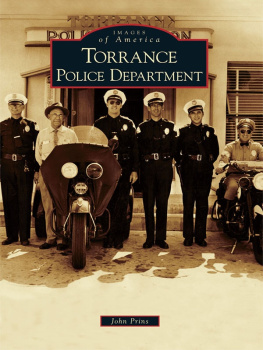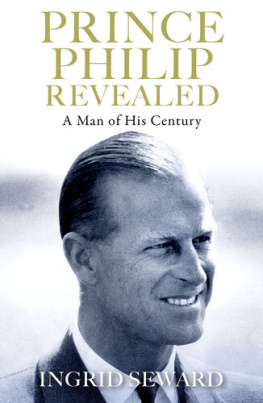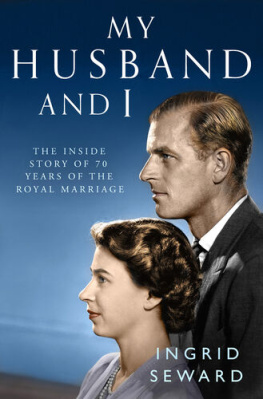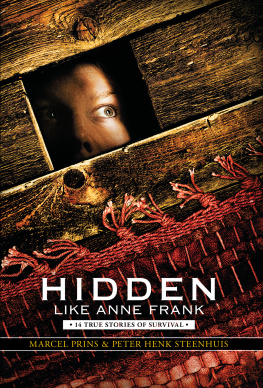FOR THELMA
Introduction
A fter many years writing about the royal family, among the questions I am most often asked are: What are the Queen and the Duke of Edinburgh like as a couple? How does their marriage work? How do they operate as parents and grandparents? In short, when you strip away all the formality of royalty and the protocol that goes with it, what are they really like? With the success of the television series The Crown , interest in the personal side of their lives has been opened up to a whole new generation.
Having been around the Queen and the Duke for over thirty years, and met them both on many separate occasions, I feel able to provide a unique insight into their lives, which I hope I have achieved through the following pages. As they celebrate seventy years of marriage, there has never been a more important time to set their story in the context of the changing world they have lived through together.
Their story is as fascinating as it is improbable. How did an almost penniless prince of Greece win the heart of the worlds most eligible princess? How did she persuade her father, a King Emperor over whose dominions the sun never set, to give his consent? She was a chaste child-woman, who went straight from her nursery to the marital bed. He was a handsome 25-year-old naval officer, independent and charismatic, but without money or estates to his name. He was born on a dining-room table in a villa on the Greek island of Corfu; she was born in a grand house in Londons Mayfair with Home Secretary Sir William Joynson-Hicks in attendance.
In a world where appearances counted for everything, Philip of Greeces upbringing was one of distinctly royal disorder. When his engagement to Princess Elizabeth was announced two years after the end of the war, the British people had very mixed feelings. To many, Philip was regarded as an immigrant fortune hunter, with distinctly German connections through his sisters. In 1947, any hint of foreign blood was frowned upon, unless the owner came swathed in riches like the great American heiresses who married into the British aristocracy. Prince Philip ticked none of these boxes, but although the princess was young and somewhat nave, she was stubborn and determined to conquer any opposition to the union with the man she loved. She had an uphill struggle, because at the time the establishment was able to wield great influence and Philip was very much not a part of it.
For the past seventy years, Prince Philip, the most fiercely competitive of men, has had to walk two paces behind his wife in public. It could have been an impossible role for a man of his temperament, but fortunately the Queen is the kind of traditionalist who believes a man should be the master of his own home. She has always appreciated how difficult it is for someone so obsessed with his masculine image as her husband to have a wife who always takes precedence over him. If compromise is marriages essential ingredient, it has been especially vital to the Queen and Prince Philip. Theirs is a surprisingly small world from which there is no escape. In their personal affairs, they have only each other to turn to for comfort and support. And, living on top of each other as they do, each must make allowances for the other if life is not to become so claustrophobic as to be unbearable.
The Queen and Prince Philip made their accommodations early in their union and their marriage has been a success because of it. They remain close and, even after seven decades, the Queens face lights up when Philip enters a room. When she first took the unexpected reins of the monarchy in 1952, she was overwhelmed by the masculine pressures of the court while struggling to come to terms with the untimely death of her father. Without appearing to do so, Prince Philip took on the unlikely role of champion to his wife and became both mother and father to their children, allowing the Queen to deal with the requirements of her position.
Until now, in the year he decided to announce he would give up his official duties, Prince Philips contribution to the royal marriage and everything it entails has been largely unrecognised, and I hope this book will help redress that oversight.
Over the years, the Queen and Prince Philip have tried to keep control of the speculation and intrusion into their private lives and that of their family. However, they have often been faced with a press who seldom appear to worry if the stories are true so long as they provide sensational headlines.
The failure of the marriage of their son and heir Prince Charles to the ingnue Lady Diana Spencer certainly did that. It was the lowest point of the Queens long reign. Never had she envisaged she would be in the position of having to write to both her son and daughter-in-law saying a divorce was desirable. It went against everything she had been taught and rankled with her strong religious beliefs and position as Defender of the Christian Faith. It was made even worse by the death of Diana a year and a day after the divorce was finalised. Without the strong moral support of her husband, the Queen may well have crumbled, but she didnt. In November 1997, three months after Dianas death, they celebrated their golden wedding anniversary, and she paid tribute to her husband, saying he was her strength and stay all these years. More personally, she spoke for the first time of his constant love and help.
The seventy-year marriage of Elizabeth and Philip has transcended some of the most turbulent times in the history of Great Britain. From the dark days of post-war Britain to the similarly dark days of the age of terrorism in which we now live, the Queen and Prince Philip have seen it all. They watched in sadness as not one but three of their childrens marriages ended in divorce, but they have lived long enough to see them all happily move on. They have enjoyed good enough health to see their many grandchildren grow up and can now watch their great-grandchildren begin that same process. No one can ask for more. The story of how they achieved this is the story of this book.
Chapter 1
WEDDING CELEBRATIONS
L ilibet is the only thing in this world which is absolutely real to me and my ambition is to weld the two of us into a new combined existence... So wrote the 26-year-old Prince Philip to his mother-in-law two weeks after his marriage on 20 November 1947. It was to be the blueprint for their life together and, such was the depth of his passion at the time, he went on to expand on his theme.
Cherish Lilibet? I wonder if that word is enough to express what is in me. Does one cherish ones sense of humour or ones musical ear or ones eyes? I am not sure, but I know that I thank God for them and so, very humbly I thank God for Lilibet and for us.
Two nights before the wedding, in the royal tradition, a grand ball was given by the King and Queen at Buckingham Palace. Philips cousin Lady Pamela Mountbatten, who was among the 1200 guests, admitted her teenage memories of the wedding day were outdazzled by the ball. It was certainly something to remember after all the years of wartime austerity. The royal estates provided plenty of game, which was prepared by the chefs, and the finest wines and champagnes were brought up from the cellars. The menu, which included lobster mayonnaise, turkey, vanilla souffl and cherries in brandy, was eaten off state china and in the centre of each round table for eight stood a gold vase filled with pale yellow roses and carnations.









